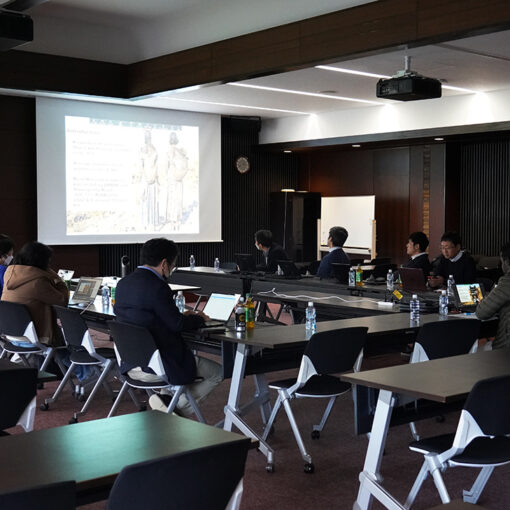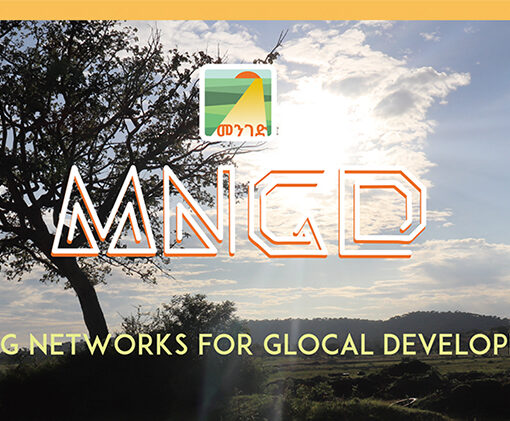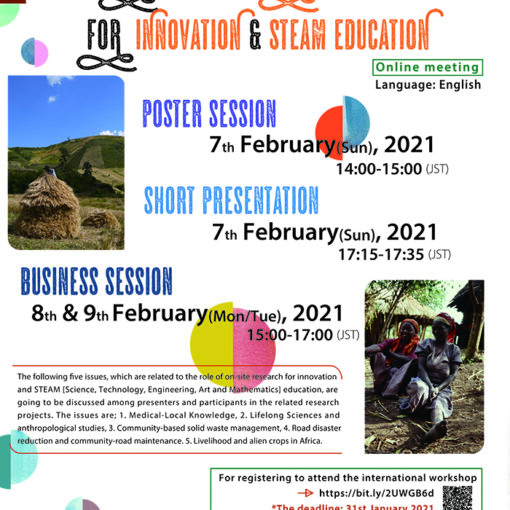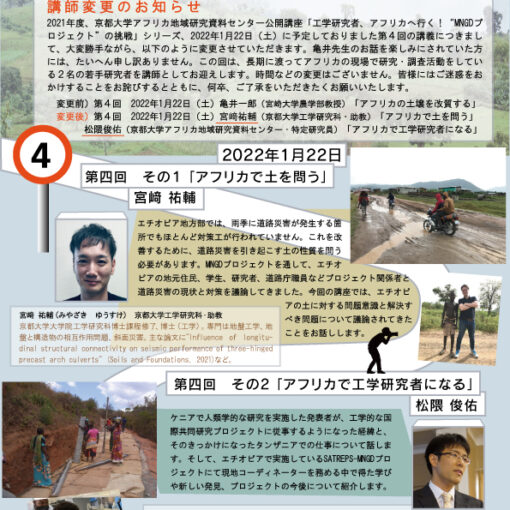アジスアベバ科学技術大学のFitsum Tesfaye Berhe先生、Eleyas Assefa先生、京都大学工学研究科の安原先生、澤村先生による題目1,2の活動についての討論会、全二回中の第二回です。
Discussion regarding Component 1 & 2 (Part2)
YASUHARA × SAWAMURA × FITSUM × ELEYAS [Moderator: SHIGETA]
How to select the size of plant additives
ELEYAS:Thank you for the opportunity. Previously mentioned points by Dr. Sawamura, along with some reflections, lead to my point. For instance, if you increase the size of plant additives, we can hopefully increase the surface area. When we enhance the shearing characteristics of expansive soil by increasing the size of the additives, however, I have concerns about the swelling characteristics of the soil. Therefore, we may need to use some additives like cement.
The other thing, there will be fluctuation in moisture and degradation of those additive materials. So, we need to study the mechanical degradation of the additives.
The other point is that if you investigate the mechanical strength of stabilized soil by using uniaxial compressive strength tests, since the additives have different lengths, we’ll have some weak plain, and when we apply some compressive load, the soil will fail.
YASUHARA:Yeah, we will use the bigger size of the additives. I don’t think we should do the UCS because sample is too small. So probably, CBS is better to know the mechanical property when we use the bigger size of the additives. But even the sample is small, right?
ELEYAS:Are you going to employ ASTM testing standard that requires sieving? For one type of test, we need to use 425 micro meter sieving.
SAWAMURA:For the UCS test of the concrete, they use much larger size of mold. That’s an option. I don’t think when we use the larger mold, we need to use the sieve at that level.
YASUHARA:As Dr. Sawamura mentioned, if we make the bigger size of the sample, we can check the improvement of the samples. But I think the CBR is better if you know the effect of the larger size of the additives.
ELEYAS:Yeah, but there are different methods to identify the expansive characteristics of soil. Is there a way to use mineralogical identification methods by using SEM or XRD, or do we have to use a direct method? The other approach is to employ the direct method, which means oedometer or consolidometer apparatus. So, in that case, it will be quite difficult for us because CBR cannot dictate the actual swelling characteristics of the expansive soil.
SAWAMURA:I see. Some tests are impossible to conduct.
ELEYAS:But still, we can do physical modeling for that. I think we’ll have a physical modeling in Jinka. In that case, we can cast with large size additives.
YASUHARA:But that’s difficult to know, to check the expansiveness. If we use this much size of the additive, then how to check the difference from the expansion. Dr. Eleyas, how can we do?
ELEYAS:Yeah, challenge is persisting.
The degradation is a very important feature
SAWAMURA:Yeah. Dr. Eleyas mentioned the two things. One is the swelling characteristics. I think even if we add some plant additive, the effect of swelling, the change of swelling characteristics is much limited. When we add some additives, the number of cracks is decreased. But swelling amount is almost same. So that is the most difficult issue. I think the most important thing is how to prevent the soil from absorbing the water when we construct the slope road in the cross section. Using do-nou bags is an option.
You also mentioned the degradation. We also conduct some degradation tests in the field. We put celldrone into the bag and put them on the surface soil of the actual field. When we check the change of the weight, the change stopped after around 100 days. I think the plant material below the water table is much stable. Above the water table it will degrade. Within the several months, it will be in a stable condition.
Initial water absorption is 6g per 1g of celldrone, but after 100 days, it decreased to 4g. I think it’s almost stable condition. The performance of celldrone becomes worse if the effect will be continued. Of course, we must carry out the similar experiment in using the black cotton soil.
YASUHARA:The people from ERA, Mr. Negash, Mr. Getahun and Dr. Worku, proposed to work with us more closely. Mr. Negashi gave us some proposal to submit to the ERA. I think your side, AASTU also mentioned we should work together to speed up our work.
FITSUM:We have the good relationships with ERA. ERA used to sponsor our master courses students in AASTU for 6 to 8 years, like 6.000.000 ETB per year, which ternimated. 4 years ago. Even the previous director of ERA is our old student. So, we have close relationships with them. I think we’re always open to work with them. We’d love to have all the help necessary.
YASUHARA:There are many resources.
FITSUM:Definitely. Yes.
YASUHARA:In AASTU side, when you are doing the experiments, who are currently in charge of the experiments?
FITSUM:Yeah. All the time it is, basically Dr. Eleyas who oversees the geotechnical things whether they’re going through the steps in the schedules we have put through. And under him, Mr. Belachew supervises Mr. Wendimu and the other two ladies. I’ve added an additional master course student right after I came to Japan who joined the effort as a new master course student. He’s interested to work in that area. We have four masters level people in our team. We basically do the experiments day to day. Nowadays, every day I go to the lab unlike the previous experiences. So, it’s going well, to be honest with you, it is effective and flawless.
YASUHARA:Very good. So, after 1 year and 4 months, we must finish this MNGD project. But after that MNGD project, we will definitely have another budget to keep on going.
FITSUM:That would be great.
YASUHARA:Anyway, before that, as you mentioned, we must make our three or four journal papers, as you mentioned, and then make the manuals.
FITSUM:That would be even for our benefit. We do not think it is a big deal.
(完)









